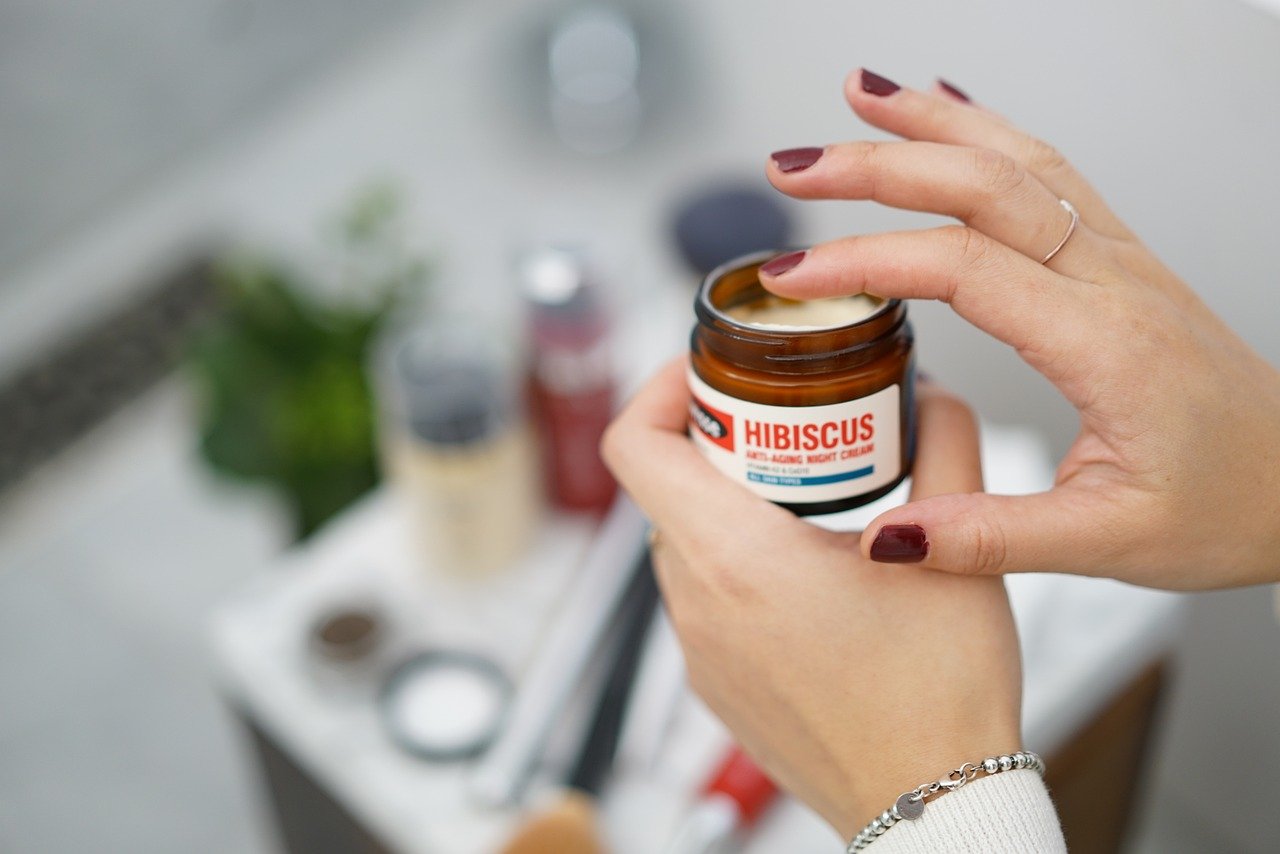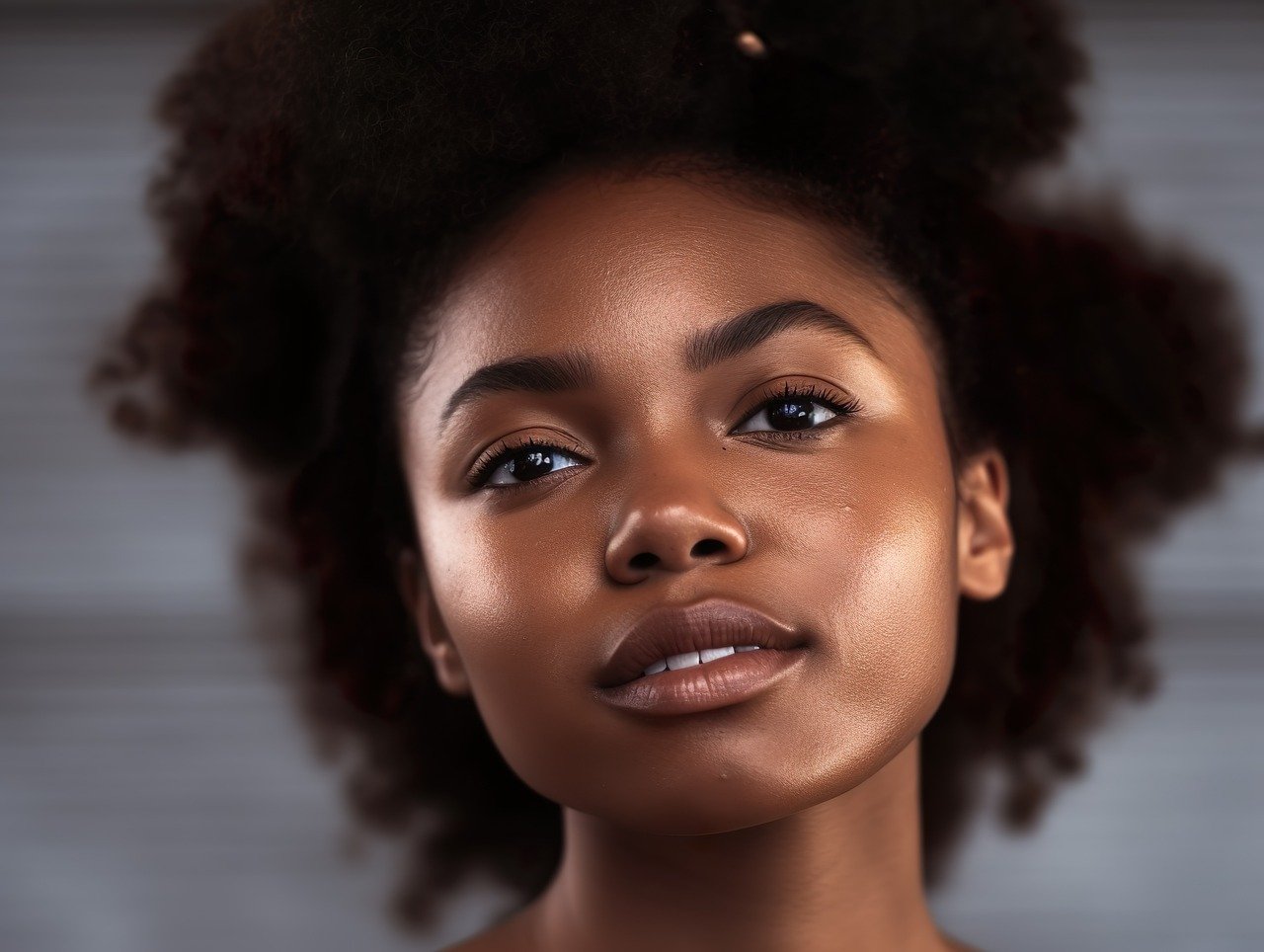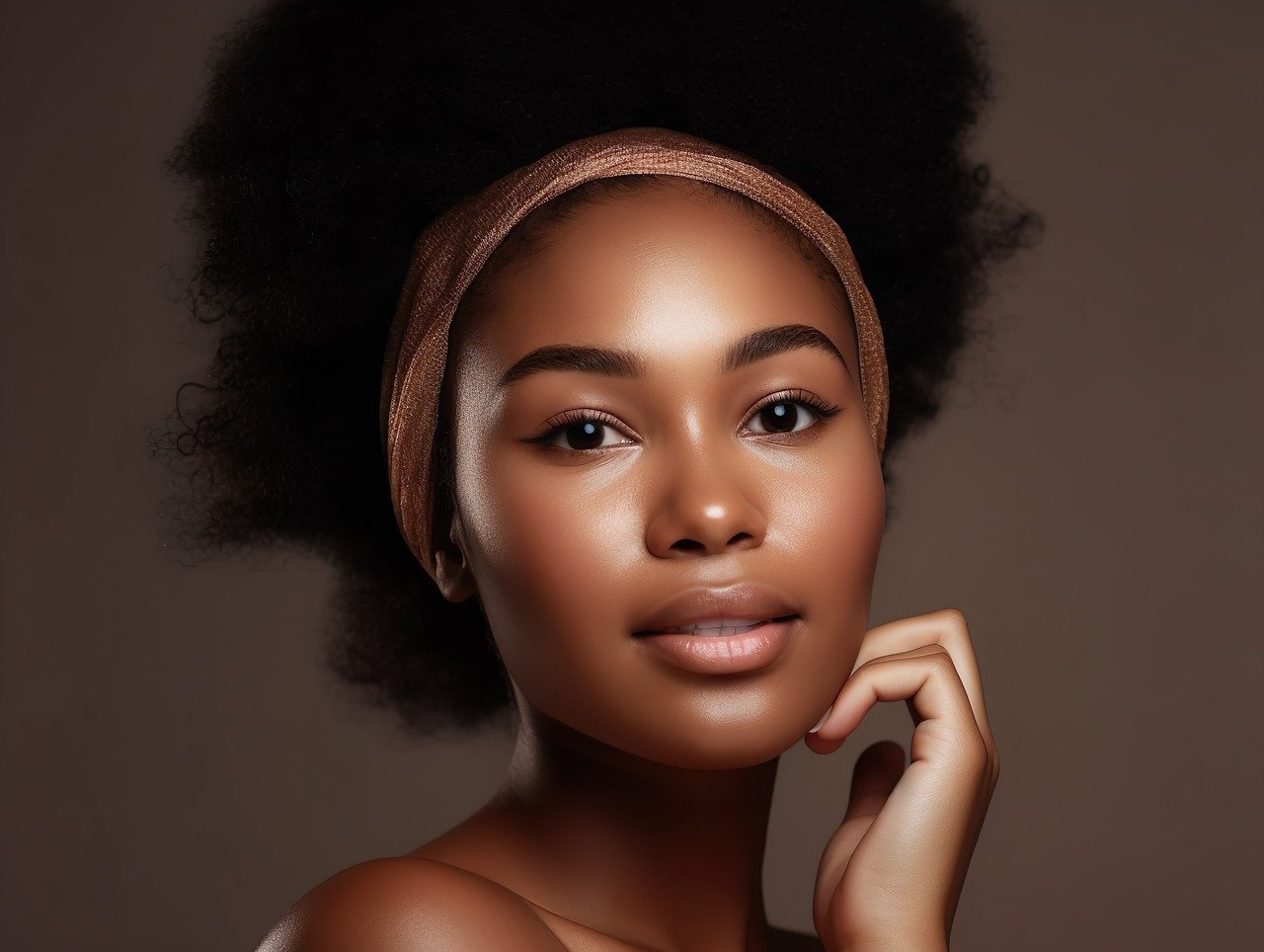Are you in search of the perfect skincare routine that meets your unique needs? Look no further! In this ultimate guide, you will discover all the tips, tricks, and expert advice you need to create your own personalized skincare routine. Say goodbye to guesswork and hello to glowing, healthy-looking skin as we break down each step, from cleansing to moisturizing and everything in between. Whether you’re a skincare enthusiast or a novice looking to up your game, this guide has got you covered. Get ready to unlock the secrets of radiant skin and embark on a journey towards your best self.
Determining Your Skin Type
Understanding your skin type is the first step in creating a skincare routine that works best for you. There are five main skin types: normal, dry, oily, combination, and sensitive. Normal skin is well-balanced, with few blemishes and a smooth texture. Dry skin, on the other hand, tends to be flaky and can feel tight. Oily skin is characterized by excess oil production and a shiny appearance, often accompanied by enlarged pores. Combination skin has both oily and dry areas, with oily regions usually in the T-zone (forehead, nose, and chin). Sensitive skin is easily irritated and may be prone to redness and reactions to certain products.
To determine your skin type, start by examining your skin in a well-lit area, preferably in natural light. Cleanse your face and wait for about an hour without applying any skincare products. Then, observe how your skin feels and looks. If it feels balanced, not too oily or dry, you likely have normal skin. If your skin feels tight and looks flaky, you probably have dry skin. If it feels greasy and looks shiny, you have oily skin. Combination skin will have oily areas in the T-zone but be normal or dry elsewhere. Sensitive skin can present as redness, rashes, or easily reacting to various products.
If you’re still unsure about your skin type or want a professional opinion, don’t hesitate to consult with a dermatologist. They can thoroughly assess your skin and help guide you toward the most suitable products and skincare routine for your specific needs. Remember that everyone’s skin is different, so what works for one person may not necessarily work for another.
Cleansing
Cleansing your face is a crucial step in any skincare routine. It helps remove dirt, oil, and impurities that can accumulate on your skin throughout the day. However, it’s important to choose a cleanser that is suitable for your skin type to avoid stripping your skin of its natural oils or causing unnecessary dryness.
When selecting a cleanser for your skin type, consider your specific needs. If you have normal skin, look for a gentle cleanser that effectively removes impurities without overdrying. Dry skin types will benefit from a creamy or oil-based cleanser that provides hydration while cleansing. Oily skin types may benefit from a foaming cleanser that helps control excess oil production. Combination skin can benefit from a gel or water-based cleanser.
The cleansing process involves wetting your face with lukewarm water and applying a small amount of cleanser to your fingertips. Gently massage the cleanser onto your face using circular motions, paying attention to areas prone to oiliness or dryness. Rinse thoroughly with lukewarm water, and pat your face dry with a clean towel. Avoid rubbing your face vigorously, as this can cause irritation.

Exfoliation
Exfoliating your skin is an important step in removing dead skin cells and promoting a brighter, smoother complexion. However, it’s crucial to choose the right exfoliant and follow the appropriate frequency to avoid over-exfoliation, which can lead to irritation and sensitivity.
When choosing an exfoliant, consider the type of exfoliation you prefer and your skin’s sensitivity. Physical exfoliants, such as scrubs and brushes, use physical particles or tools to physically remove dead skin cells. Chemical exfoliants, such as alpha-hydroxy acids (AHAs) and beta-hydroxy acids (BHAs), work by dissolving the bonds that hold dead skin cells together. Sensitive skin types may benefit from gentler exfoliants, while less sensitive skin can tolerate stronger exfoliants.
The frequency of exfoliation will depend on your skin type and the type of exfoliant you choose. Generally, it’s recommended to exfoliate 1-3 times a week, but adjust according to your skin’s needs. Pay attention to how your skin reacts and adjust the frequency accordingly. Over-exfoliation can lead to redness, dryness, and increased sensitivity, so listen to your skin and be mindful of any signs of irritation.
Toning
Toning is an often underrated step in a skincare routine, but it can have numerous benefits for your skin. Toners help balance the skin’s pH levels, remove any remaining residue after cleansing, and prepare the skin for better absorption of serums and moisturizers.
When selecting a toner, consider your skin type and specific concerns. For normal or dry skin, look for hydrating toners that contain ingredients like hyaluronic acid or rosewater. Oily or acne-prone skin types can benefit from toners with ingredients like salicylic acid or witch hazel, which can help control oil production and reduce breakouts. Sensitive skin types should opt for alcohol-free toners or those specifically formulated for sensitive skin.
To apply toner, dispense a small amount onto a cotton pad or your fingertips. Gently pat the toner into your skin, focusing on areas that may need extra attention, such as the T-zone or areas with larger pores. Avoid rubbing or tugging on your skin, as this can cause unnecessary irritation. Allow the toner to fully absorb before moving on to the next step in your skincare routine.

Moisturizing
Moisturizing is a vital step in any skincare routine, regardless of your skin type. It helps hydrate and nourish the skin, creating a protective barrier against environmental factors and locking in moisture. Choosing the right moisturizer for your skin type is important to ensure that it provides the appropriate level of hydration without causing excessive oiliness or dryness.
When selecting a moisturizer, consider your skin type and any specific concerns you may have. If you have dry skin, opt for a moisturizer with a thicker consistency and ingredients like ceramides or shea butter to provide intense hydration. Oily skin types can benefit from lightweight, oil-free moisturizers or gels that won’t clog pores. Combination skin may find a moisturizer that balances hydration without exacerbating oily or dry areas.
To apply moisturizer correctly, start with a clean face and gently pat dry. Take a small amount of moisturizer and warm it between your fingertips. Apply the moisturizer to your face using upward and outward motions, covering your entire face and neck. Be sure to pay attention to any areas that tend to be drier, such as around the nose or mouth. Allow the moisturizer to fully absorb before applying any other skincare products or makeup.
Sun Protection
Understanding the importance of sun protection cannot be overstated. Sun exposure can lead to numerous skin issues, including premature aging, hyperpigmentation, and an increased risk of skin cancer. Incorporating sunscreen into your daily skincare routine is crucial for the health and well-being of your skin.
When choosing a sunscreen, opt for a broad-spectrum formula that protects against both UVA and UVB rays. Look for a sunscreen with at least SPF 30 or higher to ensure adequate protection. Consider your skin type and any specific concerns you have, such as sensitivity or acne-prone skin, and choose a sunscreen that suits your needs.
To effectively apply sunscreen, start with a clean face and apply it as the last step in your skincare routine, before makeup. Take a liberal amount of sunscreen and apply it evenly to your face and neck, making sure to cover all exposed areas. Be thorough, and don’t forget areas like the ears, back of the neck, and tops of the hands. Reapply sunscreen every two hours, or more frequently if you are sweating or in direct sunlight for extended periods.

Targeted Treatments
Identifying specific skin concerns and incorporating targeted treatments into your routine can help address them effectively. Common skin concerns include acne, hyperpigmentation, fine lines, and dryness. By pinpointing these concerns, you can choose suitable treatment products that can help improve your skin’s condition and overall appearance.
When finding suitable targeted treatments, consider the ingredients that have been proven effective for your specific concern. For acne, ingredients like salicylic acid or benzoyl peroxide can help control breakouts. For hyperpigmentation, look for products containing niacinamide or vitamin C, which can help fade dark spots and even out skin tone. For fine lines and wrinkles, ingredients like retinol or peptides can help improve skin texture and plumpness. Dryness can be combated with products containing hyaluronic acid or ceramides to restore the skin’s moisture barrier.
Incorporating targeted treatments into your skincare routine involves using them after cleansing and toning, but before moisturizing. Follow the instructions on each product and use only as directed. Start with one treatment at a time to gauge how your skin reacts and slowly introduce other treatments as needed. Be patient, as it can take time to see visible results from targeted treatments. Remember to patch test new products and discontinue use if you experience any irritation or adverse reactions.
Eye Care
Taking care of the delicate skin around your eyes is essential for maintaining a youthful and refreshed appearance. The skin around the eyes is thinner and more prone to fine lines, wrinkles, and puffiness. Incorporating eye care products into your skincare routine can help address these concerns and provide much-needed hydration and nourishment.
When selecting an eye cream or serum, look for products specifically formulated for the eye area. These products are typically lightweight, fragrance-free, and gentle to minimize the risk of irritation. Consider your specific concerns, such as dark circles, puffiness, or fine lines, and choose products containing ingredients that target those issues, such as caffeine, retinol, or hyaluronic acid.
To apply eye products properly, start with a clean face and gently pat your eye cream or serum around the orbital bone using your ring finger. Avoid pulling or tugging on the delicate skin, as this can cause damage or irritation. This area can also benefit from a gentle massage using light pressure to improve circulation and reduce puffiness. Use eye products morning and night for maximum benefit.

Masks and Treatments
Masks and treatments are a wonderful addition to your skincare routine, providing extra nourishment, hydration, and targeted treatments for specific concerns. Depending on your needs, there are various types of masks and treatments available, each with its purpose and benefits.
The purpose of masks and treatments is to provide an extra boost to your skincare routine. They can help hydrate, clarify, brighten, or detoxify the skin, depending on the ingredients and formulation. Sheet masks, for example, are infused with beneficial ingredients and are left on the skin for a specific period to deliver intense hydration. Clay masks, on the other hand, are ideal for drawing out impurities and controlling excess oil.
The frequency of masking will depend on your skin type and the specific mask or treatment you’re using. Some masks are designed for weekly use, while others can be applied more frequently. Read the instructions on the packaging and follow them accordingly. Overusing masks or treatments can lead to dryness or skin irritation, so always listen to your skin and adjust your routine as needed.
Consistency and Patience
Consistency and patience are key when it comes to skincare. Building a routine and sticking to it is the most effective way to see long-term results. It’s important to give your skin time to adjust to new products and treatments, as it can take several weeks to see noticeable changes.
Consistency in skincare involves following the steps outlined in your routine every day, both morning and night. Cleanse, tone, treat, moisturize, and protect your skin religiously. Avoid skipping steps or being inconsistent, as this can disrupt the balance of your skin and hinder progress.
In addition to consistency, patience is crucial. Skincare is not an overnight fix, and significant changes take time. It’s important to set realistic expectations and remember that everyone’s skin is unique. Monitor and track any changes you notice, and don’t be discouraged if results aren’t immediate. Adjust your routine as needed, and consult with a dermatologist if you have persistent concerns or questions.
Creating your perfect skincare routine is a journey of self-discovery and finding what works best for you. With a dedication to understanding your skin type, selecting the appropriate products, and implementing consistent and patient practices, you can achieve healthier, more radiant skin. Remember, your skin is unique, and what may work for others might not work for you. Embrace the process, embrace your skin, and enjoy the journey toward your best skin yet.
